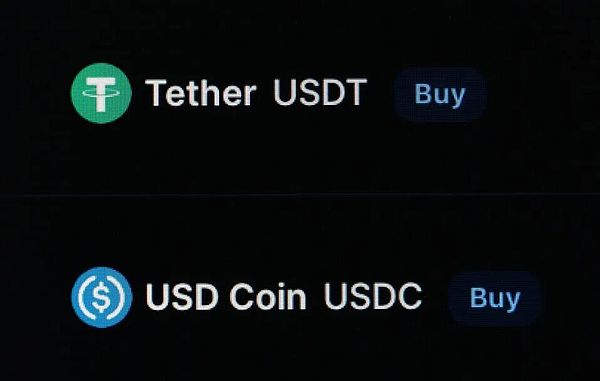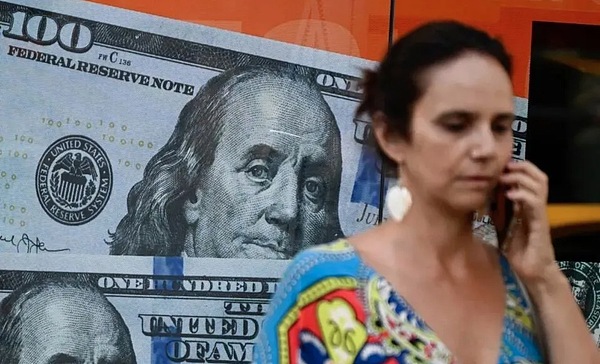Author:Jeff Gapusan

As traditional finance (TradFi) faces challenges in addressing technological innovation and growing consumer demand, stablecoins have become one of the most influential and controversial products. The United States (including policymakers and the private sector) has increasingly recognized that stablecoins can serve as a powerful tool to fund the world's largest economy, with US Treasury bonds being its safest financial instrument. A recent research report by Standard Chartered Bank points out that stablecoins may negatively impact the stability of financial institutions in developing countries, triggering large-scale deposit outflows and weakening the power of local central banks.

In Buenos Aires, a woman walks past an advertisement featuring a $100 bill. Argentinians typically exchange pesos for dollars to protect their savings from hyperinflation.
In Buenos Aires, a woman walks past an advertisement featuring a $100 bill. Argentinians often exchange pesos for dollars to protect their savings from hyperinflation.
From Argentina to Africa, exchanging currency for US dollars is a part of daily life. Stablecoins have greatly accelerated this process, providing a convenient digital gateway.
For decades, citizens of countries with weak and unstable currencies have chosen to exchange their local currencies for US dollars or dollar-denominated assets. In Zimbabwe, which has suffered from years of hyperinflation and economic turmoil, approximately 85% of transactions are denominated in US dollars. In other countries such as Ecuador and El Salvador, the US dollar has become its official currency.
The vast majority of stablecoin usage is concentrated in developing countries. In emerging markets, stablecoins are a necessity, providing protection against hyperinflation and unpredictable political crises.
In developed markets, stablecoins have become the fiat currency gateway for cryptocurrency transactions, institutional settlements, or the shift from bank deposits to digital assets.
Users can leverage stablecoins to access alternative digital payments, financial services, and investments that rival many traditional financial solutions in speed, efficiency, and cost. These two use cases present a stark contrast. One might argue that these two positions are about balancing financial advantages with practical needs. Standard Chartered Bank, with its extensive business network, local market expertise, and focus on cross-border trade and financial services, has been a mainstay of banking in emerging markets across Asia, Africa, and the Middle East. (Image source: Matthew Lloyd/Getty Images) Banks were among the first to warn of the potential negative impact of stablecoins on the economy. According to a research report released in October, current trends indicate that up to $1 trillion in deposits could flow from emerging market banks to stablecoins by the end of 2028. This wealth transfer is not merely theoretical; it could pose a profound threat to the credit systems of many countries. The core driver of the growth of emerging market stablecoins is self-protection. People want to preserve the wealth they've worked so hard to earn. According to Standard Chartered Bank, for citizens of countries facing hyperinflation or currency devaluation, "capital return is more important than the rate of return on capital." Similar to Germany during the hyperinflation of 1923-1924, emerging markets are more focused on capital return than capital return. (Image credit: Global Archives/Getty Images)
Stablecoins provide a reliable, instant, and borderless means of storing dollar-pegged wealth in digital wallets. When citizens convert their domestic currencies (such as the Turkish lira, Argentine peso, or Nigerian naira) to purchase stablecoins, the liquidity of those currencies disappears from the domestic banking system. The consequences of this capital outflow are multifaceted and particularly severe for local governments.
Partial Reserve Banking System: Traditional Financial Operating System
![]()

Shadow banking is usually a derogatory term, but as financial institutions develop stablecoins, it may further proliferate. (Image source: Ernst Haas/Ernst Haas/Getty Images)
Ironically, the popularity of stablecoins has actually fueled the spread of a taboo term in the banking industry—shadow banking. By mandating that reserve assets must have extremely high quality and liquidity, regulators have effectively turned the digital asset industry into a "captured investor" of US debt.
Stablecoins Promote a Strong Dollar Policy

As people around the world choose dollar-denominated stablecoins, the strength and importance of the dollar will increase. (Image credit: Matias Baglietto/NurPhoto via Getty Images)
Each issuance of a dollar-denominated stablecoin effectively represents a vote of confidence in the dollar, consolidating its position as the world's reserve currency.
The issuance of a dollar-denominated stablecoin effectively represents a vote of confidence in the dollar, solidifying its position as the world's reserve currency.
The digital infrastructure built by stablecoins makes it easier for people in other parts of the world to transact and save in US dollars, further consolidating the dollar's global financial dominance during this period of global financial turmoil. Global financial leaders must examine how they utilize stablecoin technology while avoiding potential negative impacts on the economies most reliant on stability. (Image source: Andrew Harnik/Getty Images)
The stablecoin market has created a direct and immediate channel for capital transfer: the risk aversion in developing countries has driven unlimited global demand for safe assets backed by US Treasury bonds, especially in emerging markets.
When people exchange their local currencies for US dollars to hedge against the risks of inflation and economic instability, these funds ultimately strengthen the financial power of the United States. Dollar-denominated stablecoins can complete capital operations in seconds that would take days for the global financial system to complete.
While opening doors for those affected by hyperinflation and economic instability, the rapid growth of stablecoins also presents challenges for global financial regulators and banks, who need to find ways to leverage the advantages of stablecoin technology (cheaper cross-border payments and financial inclusion) without compromising the stability of the most vulnerable economies they serve.
 Miyuki
Miyuki










